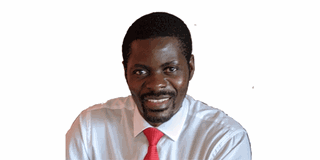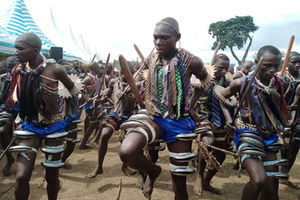
Author: Moses Khisa. PHOTO/FILE
It has become common to refer to the purported cultural head of the Bagisu (or Bamasaaba) people of the Elgon region, eastern Uganda, with the flattering title of ‘His Royal Highness’. I say purported because the position is contested, and the person occupying it is obscure, one that was scarcely previously known among the Bagisu community. Even as I write this column, I have had to look up the name!
Anyone with the most basic knowledge of Gishu culture, customs and ethos knows that it is utterly absurd to contemplate a monarchical authority and a monarch among the Bagisu. The central cultural feature, indeed an implacable practice, of Gishu community is male circumcision, typically conducted during the upper teen years and famous for being a fully public spectacle. No anaesthesia, to boot.
As an initiation ritual and rite of passage, circumcision grants every young male entry to adulthood, a seat at the table of men, and the marching orders to valiantly face the world independently, courageously and relentlessly.
As an equaliser ritual that every male must face, presented as a cultural debt to society, circumcision bestows a level of egalitarianism albeit within the bounds of a patriarchal social order. It is, therefore, fundamentally antithetical to the very foundation of Gishu culture to hoist one man to the status of a monarch, a king – ‘His Royal Highness’.
A little bit of a background note is in order. Back in 2010, something called Inzu Ya Masaaba (House of Masaaba) was established as the institutional umbrella for a cultural head known as the Umukuka. The notion of ‘Umukuka’, the official title given to the head of the institution, is itself an absurdity, to which I shall return below.
Under the current rule of President Museveni, but especially since about the mid-2000s, there has been a proliferation of cultural institutions, chiefs and kings of various stripes, some remotely legitimate, many largely dubious. This kingdomisation unfolded along with districtisation.
Ultimately, it is a phenomenon that is part of an overarching system of political control, of divide and conquer by the ruling elites at the centre of state power, but it is also opportunistically exploited by elites at the subnational, localised levels seeking access to the spoils of the system.
Thus, the problem I am concerned about of conjuring up an untenable, in fact a totally alien project of a king is not entirely unique to Bugisu, although it’s a harder sell among this community given the equalising ritual of male circumcision laid out above.
The problem is similarly at play in Bunyole, Samia, Bugwere and even among the people of Teso. A historical characteristic of all these ethnic communities is that they were patently acephalous with no supreme leader and no centralised authority.
Bearing in mind the history and heritage of Gishu society, the cultural predisposition and the current socioeconomic landscape, it is hard to see the rationale of introducing a centralised governing structure and to impose a supreme leader – the Umukuka. Creating such a structure is bad enough, worse is referring to Umukuka as ‘His Royal Highness’.
There is no royalty in Bugisu, and there’s no ‘highness’. The current Umukuka was elected under very controversial circumstances, to say the least. Before emerging to claim the position, there was nothing about him that placed him in any special status or made him stand out of the crowd of fellow circumcised Bagisu.
True cultural leaders are not elected, rather they emerge out of a system of kindred seniority, layering of family trees and hierarchical lineages. In Bugisu, we do this at the clan level, where one of the most senior clan figures takes on the status of the chief grandfather, which is what the word umukuka means.
The Umukuka (in a clan) doesn’t campaign to get elected! Instead, his status is determined by his natural place in the hierarchy of family trees and kindred lineages. Considering this literal meaning of Umukuka, therefore, it’s doubly absurd to purport to have an individual going by that title who is the supreme leader of the entire ethnic community of Bagisu. It is simply weird! Ludicrous.
The Umukuka under the Inzu Ya Masaaba setup is purportedly elected by 26 clans, but these are not clans; rather, they are colonially created administrative sub-counties. Anyone who knows the Gishu clan structure would laugh at the count of 26 – our clans are in the thousands.
In my small village in Bubulo, for example, we have more than five different adjoining clans, some relatively minuscule, others quite sizeable. My own clan of the Bamulyanyuma, for which I currently serve as the chairman, is fairly large and has sizeable members in several different communities domiciled in other locations outside the original/central zone at Bubulo.
In sum, there is so much that is simply wrong with the Inzu Ya Masaaba setup, made utterly worse by a morally dubious and culturally untenable project of a ‘king’. It’s something that many Bagisu compatriots of clear conscience will fiercely oppose and openly denounce. I am one of them.



